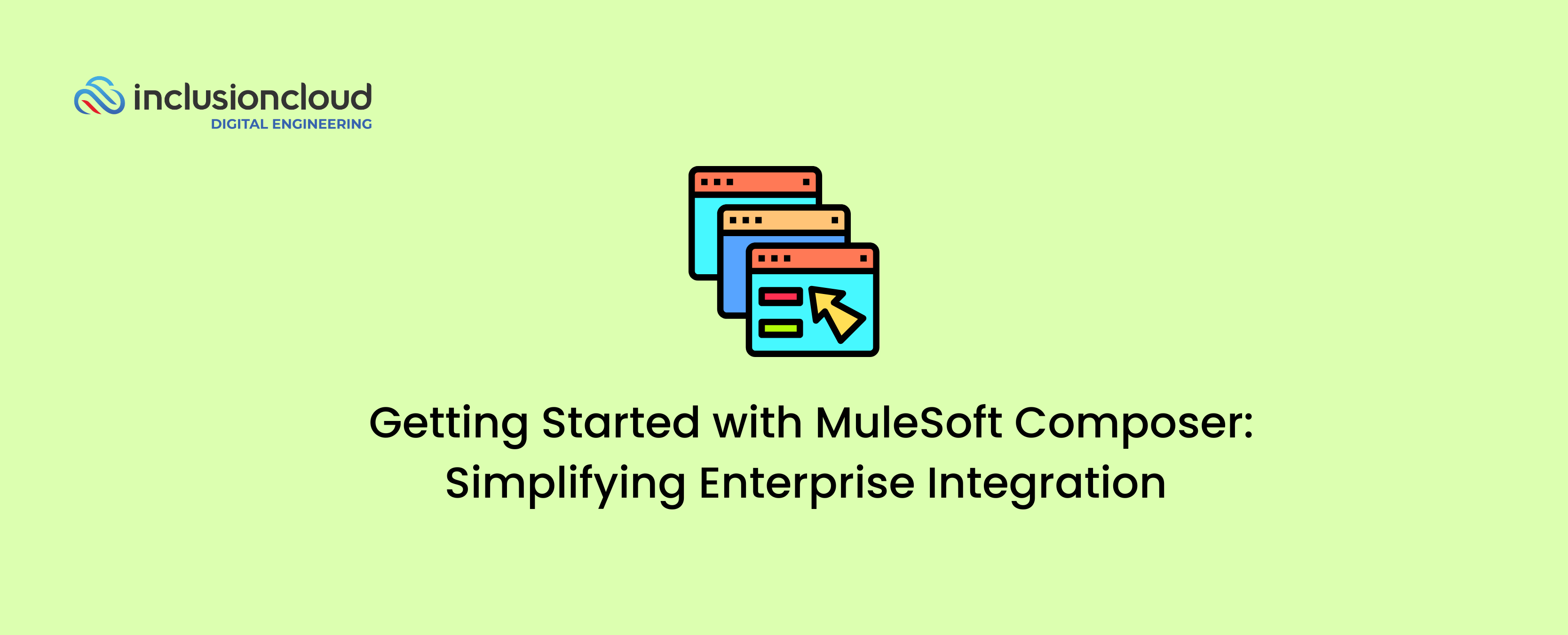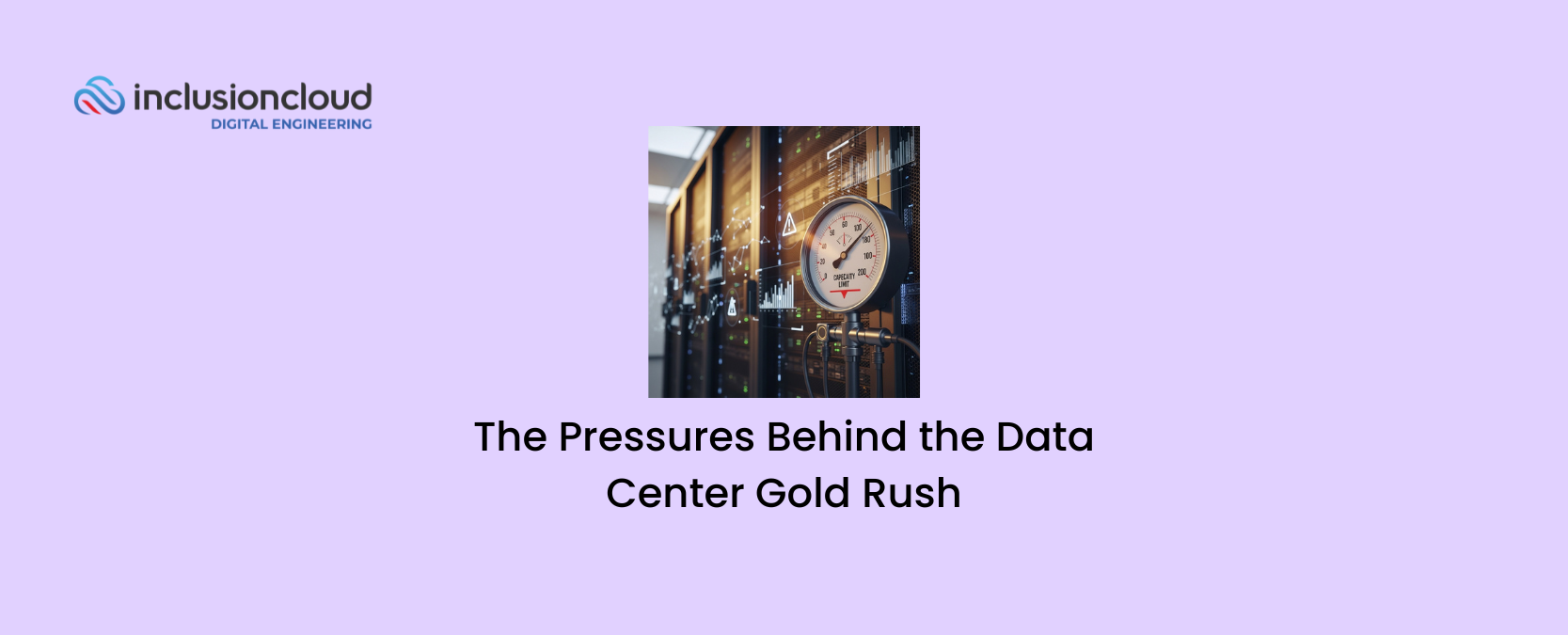Imagine how powerful it would be if the people who know your business best—your sales, marketing, HR, and operations teams—could build their own integrations. The ones who understand the company’s goals inside and out could create seamless connections between systems without having to wait for IT support. This is exactly the potential that MuleSoft Composer unlocks.
With MuleSoft Composer, non-technical users can take control of integrations, automating workflows and connecting critical applications like Salesforce, Workday, Slack, and more. No coding is required, just a clear understanding of business needs and the vision to make it happen.
Let’s explore how to get started with MuleSoft Composer and why it’s such an invaluable tool for simplifying enterprise integration.
What Is MuleSoft Composer?
Agile, user-friendly, and just clicks—these are the central characteristics that define MuleSoft Composer. Embedded into the Salesforce ecosystem, it’s a powerful tool that enables business teams to create real-time integrations between applications without writing a single line of code. Users can connect their CRM, ERP, finance, and other enterprise systems using pre-built connectors and an intuitive, easy-to-use interface. This allows businesses to automate workflows, streamline operations, and ensure smooth data flow across all their systems.
Unlike more developer-centric tools, Composer is tailored specifically for business users. This means people in marketing, sales, HR, and other departments can set up integrations themselves, reducing reliance on IT teams for integration projects. Working within Salesforce’s platform, it’s especially useful for businesses already leveraging Salesforce but looking to integrate it with other key systems like ServiceNow, Workday, NetSuite, and Slack.
Where MuleSoft Composer Fits Within the MuleSoft Ecosystem
MuleSoft Composer is part of the MuleSoft Anypoint Platform, which is a comprehensive integration platform used to connect applications, data, and devices across on-premise and cloud computing environments.
As mentioned earlier, the main focus of MuleSoft Composer is on empowering non-technical users. By giving business teams the ability to create integrations using just clicks, businesses can leverage the teams’ deep understanding of the core operations, even if they don’t have programming knowledge.
So, what are the benefits of this approach?
- Business teams know the company’s processes, goals, and challenges better than anyone.
- With no need for coding or IT involvement in every step, teams can implement integrations much more quickly.
- By reducing reliance on IT departments or outside developers, companies can save on both time and resources.
Key Distinctions Between MuleSoft Composer and Anypoint Platform
- MuleSoft Anypoint Platform: It’s a developer-centric platform used for API-led connectivity and more complex, technical integrations.
- MuleSoft Composer: It’s a business-user-friendly, no-code solution designed to automate processes and create integrations directly within Salesforce, using pre-built connectors to common applications like Workday, Slack, and NetSuite.
How to Get Started with MuleSoft Composer
1. Accessing MuleSoft Composer
To get started, you’ll first need access to MuleSoft Composer through your Salesforce organization. MuleSoft Composer is a paid add-on to the Salesforce ecosystem, so ensure your team has the right permissions and licensing to use it.
Once access is granted, the Composer app will appear within your Salesforce menu, ready to help you build integrations.
2. Explore Pre-built Connectors
Composer comes with an array of pre-built connectors that allow you to integrate with a variety of popular enterprise applications, such as:
- Salesforce
- Workday
- NetSuite
- Slack
- Google Sheets
- ServiceNow
These connectors let you quickly pull data from one system and push it into another without manual input, automating key processes.
3. Create Your First Flow
Creating your first integration is a straightforward process. Using Composer’s visual interface, you can design a flow—a series of actions that tell your connected apps what to do.
Here’s how to start:
- Select a trigger: This could be an event such as a new record in Salesforce or an updated row in Google Sheets.
- Choose an action: This could involve sending the data from one app to another, updating records, or notifying team members.
- Test the flow: Before going live, run a test to ensure everything works as expected.
- Activate the flow: Once tested, you can activate the flow, and your apps will automatically begin communicating as per your setup.
For example, you could set up a flow where when a new lead is added to Salesforce, the contact details are automatically synced with Google Sheets, and your Slack team is notified, ensuring your sales and marketing teams stay aligned.
4. Monitor and Optimize Your Integrations
After activating a flow, you can monitor its performance directly from Composer. If an error occurs, Composer provides insights to help you troubleshoot and fix the issue. You can also adjust and optimize flows over time to better suit your business processes as they evolve.
Why Use MuleSoft Composer?
After finishing this quick overview of the tool, let’s see what are the reasons why MuleSoft Composer should be considered in your tech stack to reduce the friction in your business operations:
1. Why Wait for IT? Build It Yourself!
Clicks empower business teams to create their own solutions without waiting on technical resources. Citizen developers can now take control, speeding up the entire process.
2. Don’t Break It—Clicks Survive Updates
Click-based automations are safer when Salesforce updates roll out. While code might break, clicks are easier to maintain and ensure smooth operations without IT intervention.
3. Why Code When Clicks Get It Done?
For many tasks, using clicks is faster and way more cost-effective than writing custom code from scratch.
Final Thoughts
Start your digital transformation right away! No-code tools are great resources that give ownership of integration processes to business teams—these are the people who know every detail of operations and business goals best. They no longer have to deal with the bureaucracy of generating tickets for IT teams (who are often overwhelmed with work) just to get things done.
With a tool like MuleSoft Composer, they can start integrating data and apps immediately, whenever they need to, without waiting.
Did you find this article insightful? You can find much more strategic content and product overviews on our LinkedIn page. Follow us and don’t miss out on our daily posts!





